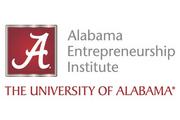
Innovation is key to driving long-term organizational level growth, and in addition, we find that innovation energizes employees and enables their own productivity, personal career growth, and wellbeing. Some of my earliest research was focused on what both high-growth startups and larger, established firms do to escalate innovation in their firms. In this article, I will review a few innovation initiatives and then close with the work we are doing at The University of Alabama to spur innovation in science and in day-to-day practice with our employees taking the lead in driving new innovations.
Lessons from a professional boxer, cost accountant and MIT lecturer
One of my earliest large research studies was on the topic of productivity gainsharing. The concept of gainsharing was started by Joseph Scanlon who was a professional boxer, cost accountant and local steelworkers union president. He invented the Scanlon Plan in the late 1930s to save a steel mill during the depressed economy. He went from those roles to later being a lecturer at MIT, sharing his stories of success in helping numerous companies come out of economic ruin to financial success.
The keys to his plan and many other variations’ success were:
- Creating a bonus structure whereby all employees shared in the financial gains they helped create for their companies.
- Providing a structured way for employees to share their ideas and drive continuous improvement and innovation.
I went into detail about Scanlon’s background because it seems to me that his insights to help companies came from his ability to fight for a cause (boxer, union organizer) and his deep knowledge of cost accounting, which helped him develop formulas for bonus sharing that were perceived as fair by both leadership and management.
The earlier research on these programs was conducted initially in three different companies. One was a fast-growth high technology company in Boulder, Colorado, and the second was an older and unionized business with numerous plants in the USA (East and West coasts), and the third was a division of a very large, established beverage company (also in Colorado). In all three companies I met the leaders and employees before their gainsharing plans were implemented, collected survey data, and then waited to see what happened with gainsharing.
As the plans rolled out and took effect, I collected additional survey data to study employee reactions. I also had access to all the data on ideas submitted and bonuses paid out. There are a few long academic papers written on this work, but I will skip the details and get to what matters. In all three of these circumstances, bonuses were paid out, employee trust improved tremendously, and employees came up with ideas and innovations that helped the businesses make more money, improve quality, and create a safer work environment.
Individual energy and innovation
When talking to individual employees at the companies, and studying the survey data, I also found that employee energy improved during this period. Since this early work, I have conducted numerous studies focused on interventions that improve innovation and continually find that not only do company level metrics improve but also employee energy goes up. Because energy is defined as “the ability to do work,” this individual improvement is an additive benefit that helps retain the best people, enhances personal wellness, and builds more interesting careers for employees.
In my studies of startups, I see a very similar pattern. Although startups don’t use programs like gainsharing, many startups share ownership through the allocation of stock options. This shared ownership results in outcomes like what we see in the gainsharing experiences. Employees feel like owners, and they are excited to share ideas and innovate. Most startups are open to new ideas because many startup CEOs share some of the characteristics of Scanlon. They are energized, fighting for their businesses to succeed (sometimes despite lack of cash, just like the struggling steel mills), and they are willing to share financial success with employees.
The University of Alabama’s all employee innovation competition
Fast forwarding to today, these same ideas are being implemented in our third annual faculty and staff innovation pitch competition. We are borrowing from what we at the Alabama Entrepreneurship Institute learned in our student competitions and from non-academic institution competitions with all employees.
One example of a well-established corporate all employee competitions has been implemented by Exelon. From their website, “Exelon is the nation’s largest utility company, serving more than 10 million customers through six fully regulated transmission and distribution utilities — Atlantic City Electric (ACE), Baltimore Gas and Electric (BGE), Commonwealth Edison (ComEd), Delmarva Power & Light (DPL), PECO Energy Company (PECO), and Potomac Electric Power Company (Pepco).”
Exelon is a company doing a lot of work to encourage employee innovation via their own all employee innovation competitions. From employee poster sessions at major sports venues to a virtual event with 126 employee displays in 2020, this company is an example of engaging employees in the innovation process.
Universities are at the forefront of scientific discovery and innovation, and it’s exciting to see that The University of Alabama is also spearheading an initiative to engage all employees in the innovation process. We are gearing up for the competition on May 18, 2022, and it is supported by numerous leaders at the university who are part of the program, providing resources to make the competition work and getting involved as judges and coaches. Competitors are coming from different colleges and have ideas related to work at UA and ideas they are brewing with their spouses or on their own. It’s fun and energizing to see what they are doing, and our goal is to tap into their ideas and willingness to innovate.
There is a growing interest in focusing on innovation in the state, and as you can see, there are numerous ways larger, established companies as well as smaller startups can encourage innovation beyond the research and development departments. Innovation can be focused on employee-driven small improvements or can be big disruptive ideas. Both are important for success, and we have knowledge and research to help large and small organizations make these processes more efficient.
One of my favorite employee innovation stories is about reinventing GE’s MRI machine, not with technology but through one man’s journey to find a simple solution to alter the experience so children would not longer be afraid. With simple decorations they made the fearful experience of going into a terribly scary machine transform into a ride in a pirate ship. This type of innovative enhancement can be done in any organization if the tools and skills to innovate are provided to employees and then their ability to suggest an idea is supported.
Companies big and small, established and new can all drive innovation
The call to get involved in building our entrepreneurial ecosystem is not just to help us support startups but to change your own organizations. From all employee innovation competitions to building bonus plans tied to innovation and to smaller initiatives like job crafting (helping employees innovate and recreate their own jobs) and teaching innovation skills, there are numerous methodologies and practices to help spur innovation everywhere.
To learn more, please connect with me and get involved with our work. Our goal is helping all companies innovate and grow.
